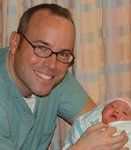Our Generation: Buy-in, buy-out-or bye-bye? One ob/gyn's story
Fresh out of residency, I was asked to join a small but successful practice of four ob/gyns in a large, metropolitan area. At first, everything seemed perfect. And then, the buy-in talks began. The "honeymoon" was over.

Let me introduce myself. I'm the new columnist for "Our Generation" and I hope the tale of my journey from private practice to full partner offers encouragement-and warning-to those embarking on a similar career path.
Leaving residency
I need to step back here and give you some background on the practice so you'll understand how things evolved. When I joined, there was only one partner, who had founded the practice, and two other associate physicians. During my interview with the partner, he indicated he planned to work a few more years and then sell the practice to his associates, but that was never spelled out in the contract. Four years later, it became clear that he no longer had any intention of retiring, and that I'd need to buy-in, and when he finally left, also buy him out. In addition, one of the other physicians in the group had to retire on medical disability, which left only two of us to consider the offer. Luckily for me, the other potential partner was my age and single, and also very hesitant to simply sign on the bottom line without some investigating.
What is a practice worth?
For me, investigating a partnership is very important, whether it's a business or personal proposition. It amazes me that many of my colleagues will spend months in marriage classes learning nearly everything about their partners and asking every conceivable question before they tie the knot, but they won't devote half that time and effort to researching their business partnerships. My colleague and I hired an accountant to look at our practice's finances, and an attorney to crunch the numbers on a buy-in amount. Two of my colleagues from residency didn't do similar due diligence after they were offered partnership, only to find out that their practice was massively in debt, a debt that they were now legally responsible to repay.
Our practice, fortunately, was profitable and debt free, but the combination of the buy-in and buy-out amounts was a deal breaker. There is a simple formula to determine the value of any practice, and it should only involve a percentage of the accounts receivable plus a percentage of the depreciated capital equipment (computers, furniture, medical equipment, etc). Many physicians feel that they also should pay for a practice's name, reputation, and patient loyalty. The reality is that many patients will change practices for a variety of reasons, and to expect an associate to pay for assumed good will is unrealistic and unfair. The depreciation in the practice is also very important; an office that has never been updated cannot demand the same value as one that continually reinvests in newer technology and updated equipment.
The buy-in amount initially proposed to me was much higher than the formula I mentioned, and both my colleague and I declined. We were open for further negotiations, but unfortunately, they never materialized.
